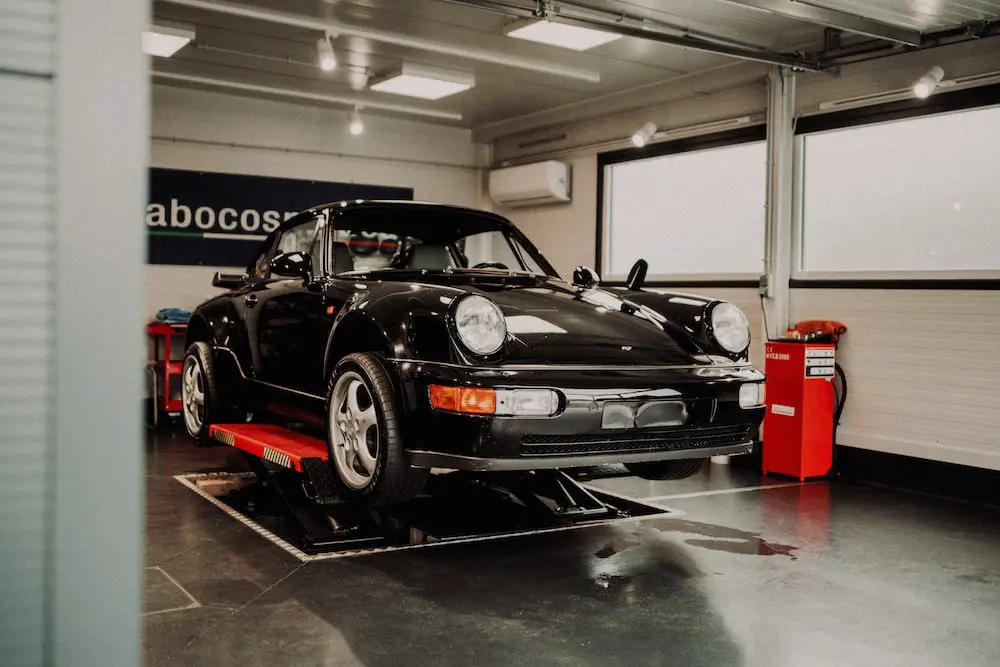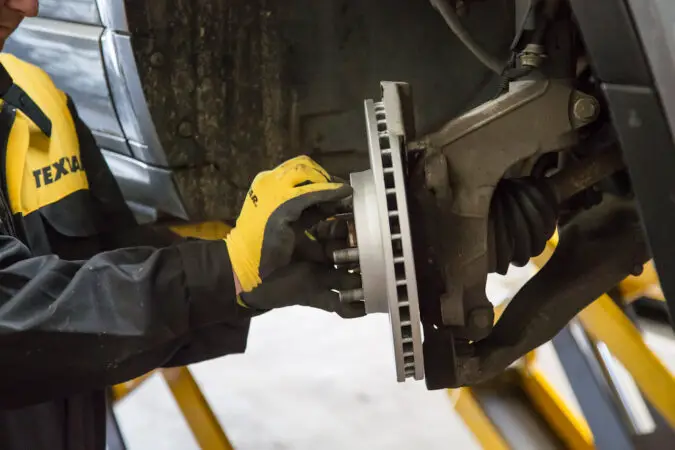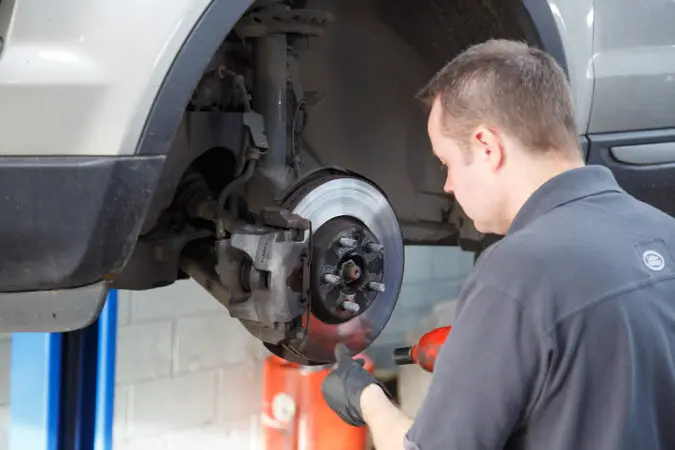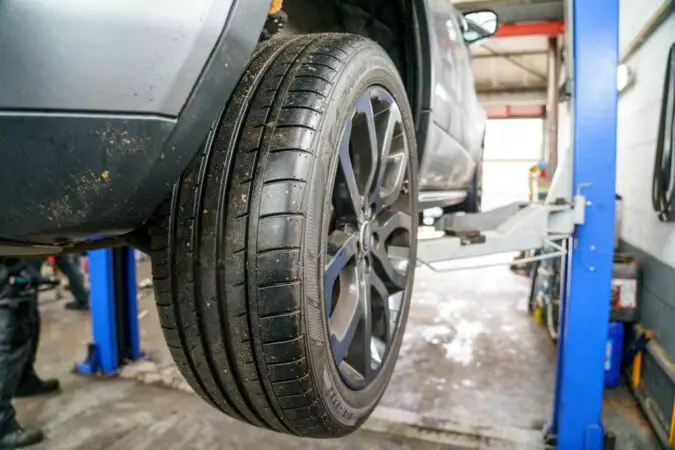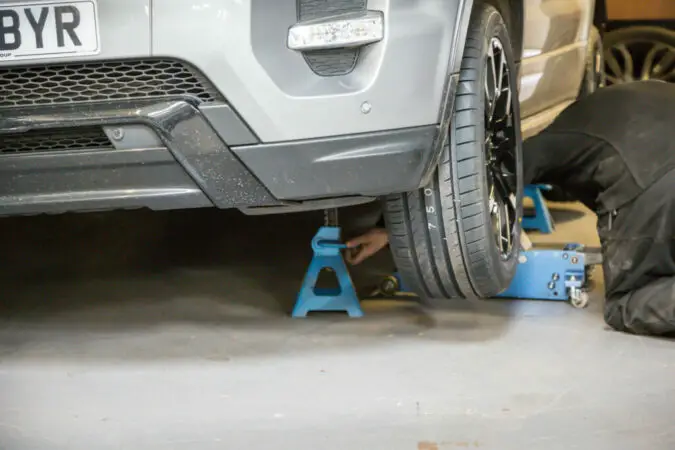If the engine is the heart of a car, then the wheels are its strength. They are responsible for putting down the power in the most efficient manner. No matter how good your car is, how powerful your engine, or how loud your exhaust is; unless you’ve got a good tire setup, it serves little or no purpose. Hence, the importance of a camber car.
It almost feels like eating an ice cream AFTER it melts. Where’s the fun in that?
The camber settings of a car can deeply impact your car’s driving style and dynamics in several ways. Are you new to camber cars or having trouble deciding the best camber settings for your car?
Well, you’re in luck. We have here a thorough guide ranging from types of camber cars to their effects. In the end, we’d put you in the driver’s seat and let you decide what’s best for you (and your car). There are three major wheel alignment angles (and their settings) which we’ll be discussing here:
Camber
The vertical degree at which the wheels of the car are positioned in the wheel well defines the camber of a car. In layman’s terms, how inward or outward the vertical angle of the tires is, with respect to the surface, is the camber of the car. The types of camber cars can be further distributed into three categories: –
- Positive Camber
- Negative Camber
- Zero Camber
The more the tire is perpendicular to the vertical axis, the less would be the camber degree of the tires. This is called ‘zero camber’ where there’s no (outward or inward) tilt in the vertical axis of the wheel.
Some manufacturers who produce hardcore cars like the Mercedes-Benz AMG GTR give fixtures and tools to adjust the camber in these cars. This allows the owners to modify the camber according to their needs thus enhancing their driving experience.
Positive Camber Car
When the vertical axis of the wheel, with respect to the ground, is tilted inwards, it is said to be a positive camber car. This means that the outer part of the tire is in more contact with the surface. Cars requiring low steering input like tractors, trucks, and other off-road vehicles, use this type of camber alignment.
However, this is the most uncommon camber out of all cambers and has almost zero application because of its feasibility. It is less popular among car enthusiasts and gearheads but popular amongst truck enthusiasts and utilitarian/agricultural users like farmers.
Positive camber car was popular among early race cars because they had no power steering. Also, they were not typically ahead of their time in the suspension department. So there was a need to enhance the suspension system of older race cars to improve stability which was why positive camber was introduced.
However, the idea of a positive camber car in modern (racing) cars with flat and bulky tires are like inviting death. Typically, having low-steering input gives you less confidence in twisty roads where all you want is to test your car’s performance. Having positive camber and going fast through a corner is the perfect recipe for disaster.
You just hope that you don’t get toppled over or get caught in a roll-over accident.
Negative Camber Car
Negative camber is quite the opposite of a positive camber car. So when the wheels are vertically inclined towards the car, the setup is known as negative camber. In this case, the innermost part of the tires is in direct contact with the surface. This lessens the burden on the outermost part of the tire.
If you are wondering, the science behind better grip from negative camber is quite simple. When you approach a high-speed turn, a lot of load is transferred to the outermost wheel of the car. This causes the tire to deform. The negative camber counteracts this action by allowing tire rubber to cover more of the tire contact patch.
Negative camber became extremely popular with the Japanese car culture in the 80s and 90s. The camber car culture’s popularity in Japan spread so much that a new camber species was born: extreme camber. Extreme camber involves installing aftermarket suspension to drop your car extremely lower to the ground.
Camber Alignment
It is also important to know the difference between a negative camber car and an extreme camber car. While they both may look somewhat similar, they function in completely different ways.
Negative camber is often used in racecars and supercars to aid in handling and performance. Meanwhile, an extreme camber car sacrifices handling to make the car look attractive and drift-capable. Here are some of the most popular uses:
1. Race Car Camber
Negative camber is useful for track setups. If you are looking to get the most out of your car on a track day, try giving this camber a shot. A race car camber setup will provide you with an even more immersive driving experience. It adds Zen to the car’s handling, making you feel almost glued to the track surface.
2. F1 Racing Cars
A prime example of negative camber can be found in Formula One racing cars. F1 cars need to take high-speed turns which means that it requires an insane amount of grip from their tires. Negative camber can help extract the most grip out of those meaty tires in high-speed cornering.
3. Drag Races
For those who live their lives a quarter-mile at a time, a negative camber car may not be what you’re looking for. A negative camber car has difficulty in managing to put its power done. This is because the negative camber provides less tire contact with the ground in a straight line. So, you will likely be seeing some changes in your quarter-mile times.
Although a zero camber is not ideal, the camber should be set close to zero degrees when drag-racing.
Extreme Camber Car
Extreme camber car, as the name suggests, involves dropping your car so low to the ground that there’s no visible gap between the wheel and the fenders. Many have coined the term ‘slamming’, where the car sits so low that the bumper lip of the car is almost touching the ground.
The extreme camber car concept is more common among streetcars rather than among race cars. An extreme camber car only adds to the aesthetic value of the car instead of improving performance.
In an extreme camber car, only a limited part of the tire is in contact with the ground, which means less grip. So maneuvering it in tight spaces is almost like maneuvering a ship on open seas.
Drawbacks
Obviously, with an extreme camber car, there are several drawbacks. First and foremost— the way it drives.
The drive becomes very harsh to the point where you start feeling unpleasant. Even a race car camber would have better driving comfort on the road as compared to a slammed car.
Secondly, because of no gap between the wheel and the fender, there is no suspension travel. This means that you feel every bump on the road. Also, because the car sits so low to the ground, it is nearly impossible to drive them over speedbumps. If you happen to own a slammed car, choose your routes wisely, or you may end up stuck on a speedbump.
Benefits
Given that, an extreme camber car has a very appealing and eye-catching ability. The way it can turn heads means that you don’t have to spend 6 figures on supercars to steal car shows. Yes, an extreme camber car requires proper care and maintenance but that is just part of the fun. You can even look cool in a slammed Civic.
Moreover, extreme camber is one of the ways to make your car drift-capable. With a few camber tweaks and some proper tires, you’ve got yourself a proper drift build.
Negative Camber – Causes & Solutions
Causes
Sometimes, negative camber can occur unintentionally. However, this is not very common and depends on your treatment of the car. A car having a harsh life has a higher chance of having a beaten-up suspension as compared to a carefully-driven car. Suspension and wheel components such as control arms, springs, struts, and spindles, become frailer and more prone to malfunctions.
Causes such as driving too fast over potholes, rough patches, and speedbumps can cause your suspension to take a beating. In turn, your car components become weak and break. This negatively affects the drive of the car by dis-positioning your wheels.
Similarly, adding excessive weight to your car can give your suspension a serious workout. These put a massive burden on the springs and shocks, thus, disturbing the wheels’ ideal angle and positioning. An unnatural wheel configuration can be the reason for a major road accident. You would not want to put your life in danger as well as of others around you.
Solutions
Since every machine is extremely fragile, it must be handled with care. Otherwise, failing to maintain it can cost you a fortune. Replacing a control arm can invite several other issues to your doorstep like decreasing your car’s value. Or worse, diminishing your car’s life.
You can ensure a longer car life by taking preventive measures against rash driving on rough roads. Slowing down for a speed bump may shave off some precious seconds. However, it can save you from future unpleasantries.
Similarly, regular maintenance and checkups of your suspension system can help avoid negative camber or any other issue. A yearly checkup from your mechanic can help diagnose possible issues with your car’s suspension system. This way you can steer clear of any unwanted negative camber consequences.
Caster
Caster is the angular displacement of the steering axis from the vertical axis of the wheel. In simple words, the vertical angling of the axis around which the tire pivots (steering axis) is known as the caster.
To understand camber better, one must view the wheels from the front of the car. Meanwhile, the caster is best observed when viewed from the side. The caster can be further categorized into two types:
- Positive Caster
- Negative Caster
- Zero Caster
Positive Caster Car
In a positive caster, the wheel (and the lower pivot point) is in front of the upper pivot point of the axis. The flatter the axis is against the surface and toward the car occupants, the more positive the caster degree would be. When viewed from the side, this gives the axis a slanted look.
A primary example of a positive caster can be found in shopping carts’ wheels. You’d notice that as you push the carts, the wheels go in the same direction that you’re going.
Almost every car that comes out of the factory is equipped with a positive caster because of the way they function.
Also, with an ideal positive caster, your braking performance will be talking numbers.
Under heavy braking, the slanted position of the casters transfers most of the weight to the front wheels. This means that the front tires are being pushed down the surface with mighty force. The front tires now have the most grip, and more friction between the tire and the road means better braking. Eventually, the car is brought to a standstill in a matter of seconds.
Negative Caster Car
As expected, a negative caster works completely opposite to a positive caster. When viewed from the side, the steering axis lies behind the vertical line that extends from the tire-surface contact point. This gives the axis more of a slanted look, but this time, away from the car occupants. Here’s how it looks:
This type of setting was common in the 20th century when car suspensions hadn’t seen better days. However, currently, a negative caster has very little or no practical examples in the car world thanks to technological advancements.
Neutral Caster Or Zero Caster
In a neutral caster, the steering axis is flush against the vertical line which extends from the tire-surface contact point. So, unlike the other two casters, the neutral caster does not have a slanted positioning.
Just like positive camber, this type of setting has very few practical examples among cars. However, it is somewhat common among utilitarian vehicles like tractors and pit trucks.
Toe
The direction in which the tires are pointed, concerning the car’s centerline, depicts the toe of the car. In layman’s terms, a tire’s toe represents the amount of pivot created by the tires around the wheel’s vertical axis.
Also, for a better understanding of the toe mechanisms, it is best to view from the top angle of the car.
In a perfect world, the directions of each tire should be aligned equally such that they are parallel to each other. However, such is not the case. While this may be true for old, vintage cars, the car industry has seen many technological developments ever since.
The toe mechanisms can be broken down into two types:
- Toe-in
- Toe-out
Toe-In Car
In a situation where the wheel’s direction is angling towards the vehicle’s centerline, the term toe-in is used. Typically, in a toe-in setup, the front wheels are constantly fighting against each other hence creating friction. This friction is pushed back to the rear wheels, thus, giving the most grip to the rear wheels.
Since the rear wheels have the added friction advantage, this would help the rear tires put down the power more efficiently.
This is why Toe-in is mostly preferred in fast RWD cars. Their inward-angle positioning of the tires can considerably change the handling dynamics of the car by minimizing power loss.
Toe-Out Car
The way a toe-out setup works is completely opposite to a toe-in setup. In a toe-in, the wheels are positioned in such a way that they are facing the vehicle centerline. Whereas, in a toe-out setup, the wheels are facing away from the vehicle’s centerline, hence, creating an outward direction.
A toe-out setup is generally common among normal daily-driven cars or cars having an FWD drivetrain. Having a toe-out setup in FWD drivetrains is helpful in countering torque steer and providing more stability while accelerating.
Facts about Camber on a Car:
- Camber is the angle at which a car’s wheels and tires are tilted toward or away from the car.
- Camber angles are much like our own legs with positive, negative, and neutral camber.
- A tire’s contact patch is crucial to vehicle handling, and more contact translates to more grip or traction.
- Most modern cars feature a slightly negative camber angle, which works best in many scenarios.
- A negative camber angle can help to add contact patch and grip in corners, helping a car to go faster through them.
- Pot-holed roads and cheap or mismatched tires can throw a car’s factory-set camber angle out of whack.
- Classic signs that your car is out of alignment include uneven tire wear and possibly an annoying pull to the left or right when driving.
- A technician can use a computer-linked alignment tool to measure camber, toe, and caster and then return the settings to factory specifications.
- A four-wheel alignment service is recommended for vehicles with all-wheel drive or independent front and rear suspension designs.
- Expect to pay about $100 or less for an alignment service, and a reputable shop will discuss the best option for you and the estimated cost.
Conclusion
In this article, we have covered everything on each of the three main alignments in depth. First, we discussed their mechanism and how they work, then identified their different types. Then we discussed the benefits and drawbacks of each type as well as their uses in the modern car world.
We conclude how significantly a car’s driving dynamics can change with some slight alignment tweaks. We learned how introducing even a slight negative camber in your car can refine your handling and make it more attractive. Yes, your car may not become as nimble as a McLaren around the track but something is better than nothing.
However, we recommend professional guidance if you’re looking to modify your car’s camber, caster, or toe. Watching DIY videos on YouTube can sometimes be misleading if you don’t have complete car knowledge. A wrong alignment can be the cause of serious road mishaps. This is why a specialist mechanic workshop should be the first thing in your mind if you’re looking to alter your car’s suspension.
Frequently Asked Questions (FAQs)
Here are some popular FAQs:
What Is Camber On A Car
Camber on a car is the inward or outward inclination of the wheel from the wheel well on a vertical axis. When viewed from the front of a car, the wheel gives off a slightly slanted look. When the (slanted) wheel’s top part is tucked in the fenders, the setting is called negative camber. Meanwhile, positive camber functions in the opposite way.
How To Adjust Camber
Follow these instructions to adjust your camber alignment. First, check your wheel alignment camber using a camber gauge tool by sticking it to the wheel’s brake disc. Also, make sure to note them down to determine whether the angle is positive or negative. Then, jack up the car and remove the tires. Next, loosen the strut nut and keep adjusting the disc until you have your desired camber alignment. Also, it is recommended to match the manufacturers’ endorsed camber alignment setting as per the driver’s manual. Upon getting your ideal camber alignment, tighten the strut nut and put the tire(s) back together.
How To Camber A Car
To camber a car, all you need is a camber kit. However, it mostly depends on the model of your car as not all models may have the same suspension specifications. Generally, for people looking to stance their car, mostly you’d need: coil-overs, control arms, and a nice set of wheels. The process is quite simple and usual. Start by jacking up your car and removing the tires. Then, install the newly-bought coilovers as well as the control arms. Next up, adjust the coilovers and the control arm bushings to your liking. You can either go all the way and set the coilovers for minimum suspension travel for a god-like stance. Or you can go a bit easy and allow some gap between the fenders and the wheels.
How To Camber A Car In GTA 5
After the Los Santos Tuner DLC, Rockstar has made it easier to camber your car in GTA V. For some vehicles like the Pfister Comet S2, the stance can be changed from within the interaction menu. Go to Interaction Menu>Vehicles> Vehicle Stance> Lowered. However, the above feature works only for specific vehicles. But, there is a workaround to manually camber your car in GTA 5. You can start by shooting the tires of the vehicle. After spending a couple of rounds, you’d notice the car go lower down to the ground. Also, for this to work, the tires must not be bulletproof.
How Much Does It Cost To Camber A Car
The cost to camber a car depends on what you’re looking for and what type of person you are. there are two types of people who camber cars. There are those who are looking to correct their camber alignment back to factory specifications. Otherwise, there are those who want an extreme camber car (aka stanced cars). If you are the first type of person, your camber cost will likely be under 50 bucks. All you need is a camber gauge and you’re good to go. If you’re the second type of person your cost may likely be high. Also, it will mostly be depending on your budget. You should be expecting a cost of around $400-$500 including control arms, coilovers, and alignment. An average wheel alignment can cost up to $150. However, since it depends on your budget, the cost may stretch up to $2,500.
How Much Camber Should A Car Have
All normal everyday-driven cars come with a slight negative camber from the factory. The camber alignment degree among these cars ranges from 0.5° to 1°. Any degree below 1 is dangerous and should be fixed immediately. A poor camber alignment will burn unnecessary fuel, wear more tires, and cause your car to pull to the right (or left) However, camber alignment among stanced or slammed cars is purely dependent on the owners’ preferences. For them, the sky’s the limit.

